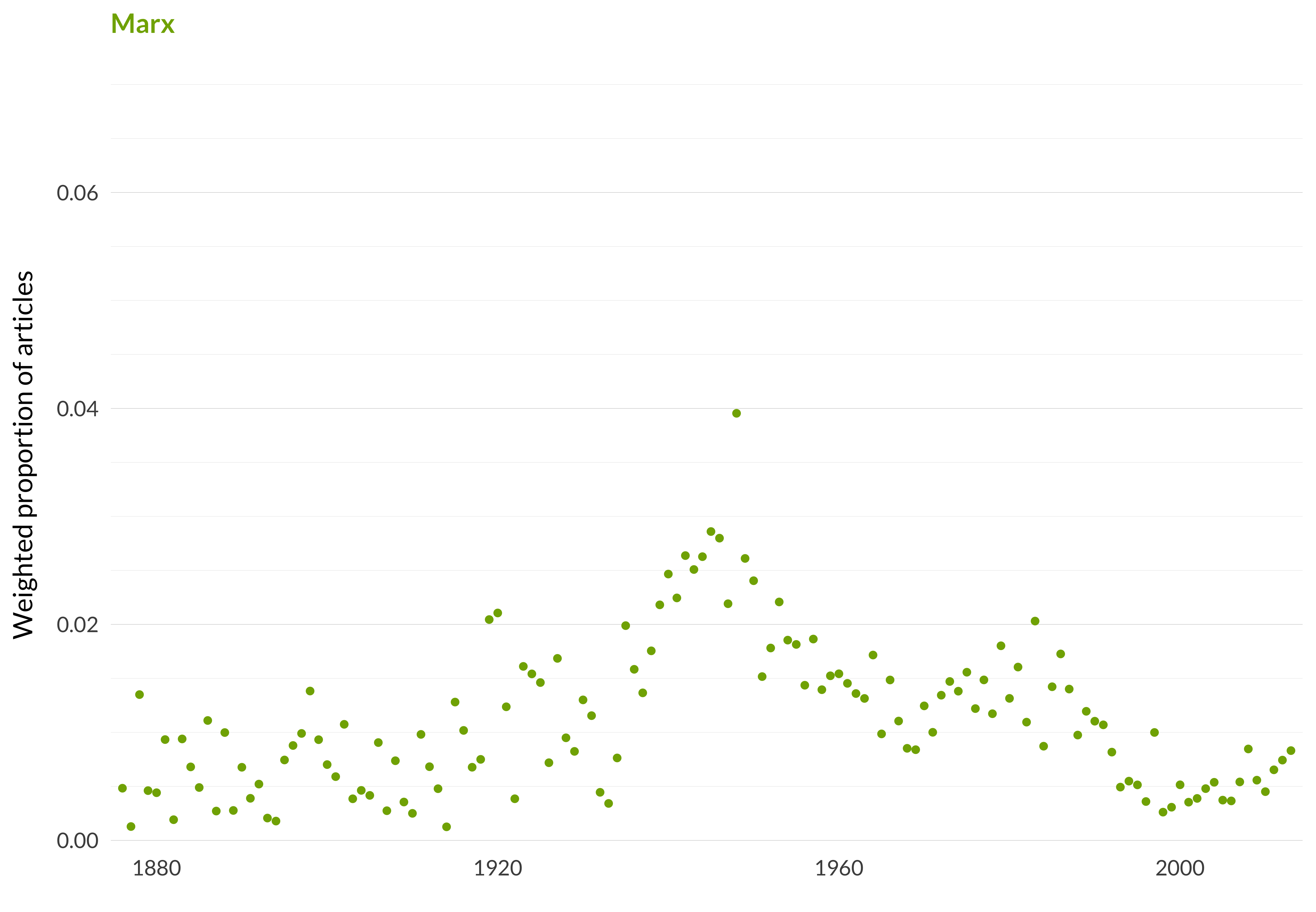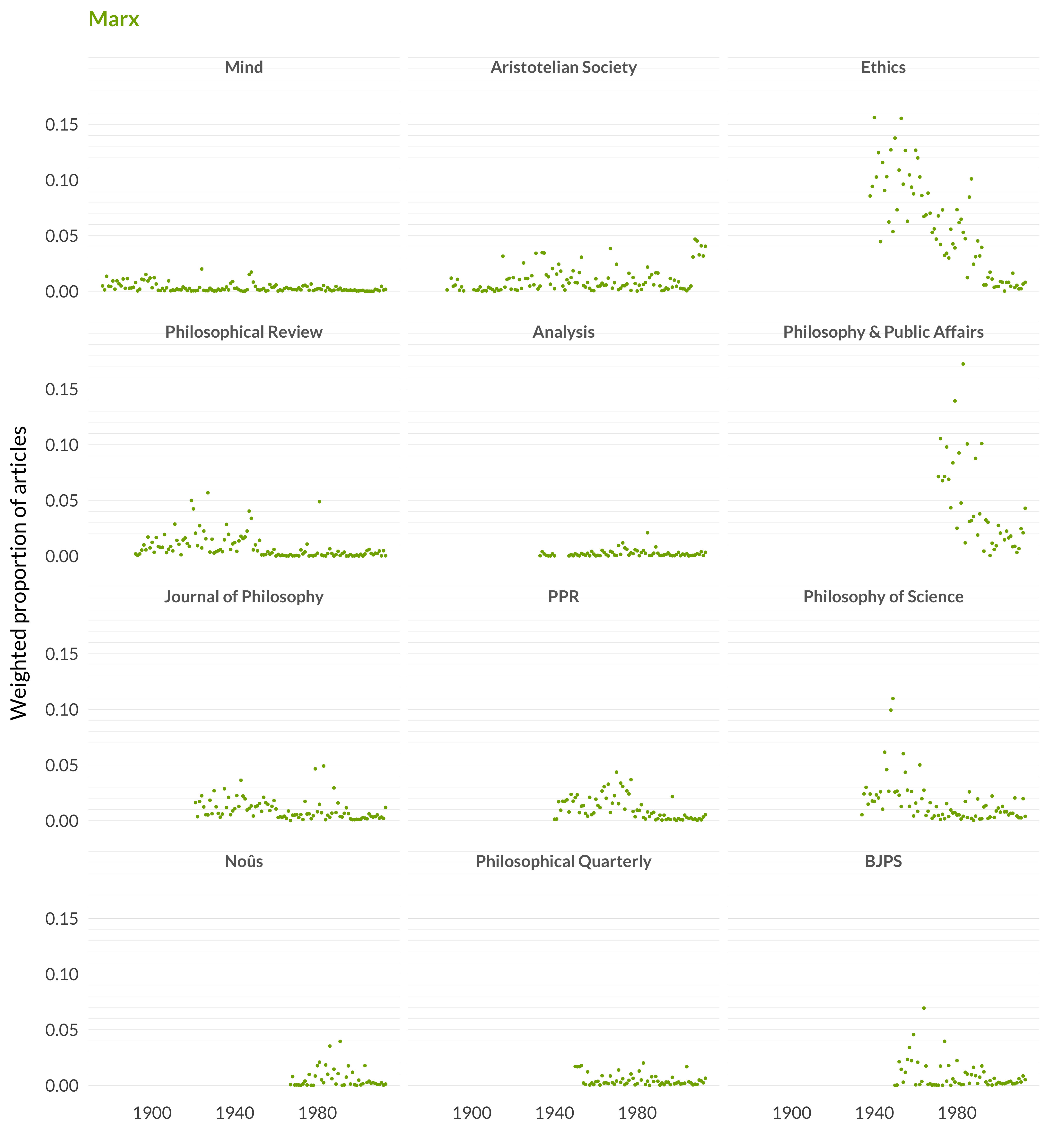2.23 Marx
Category: Social and Political
Keywords: marx, economy, economics, labor, economic, capital, social, society, exchange, production, market, societies, individualism, group, groups
Number of Articles: 449
Percentage of Total: 1.4%
Rank: 18th
Weighted Number of Articles: 385
Percentage of Total: 1.2%
Rank: 29th
Mean Publication Year: 1961.4
Weighted Mean Publication Year: 1963.9
Median Publication Year: 1961
Modal Publication Year: 1948
Topic with Most Overlap: Life and Value (0.0493)
Topic this Overlaps Most With: History and Culture (0.0419)
Topic with Least Overlap: Color/Colour (0.00035)
Topic this Overlaps Least With: Ontological Argument (0.00043)

Figure 2.58: Marx.

Figure 2.59: Marx articles in each journal.
Comments
This is a fairly easy topic to summarise—at its core, it’s Marxism. And the trends are fairly easy to describe as well. There isn’t much in the generalist journals at any time. Unsurprisingly, the moral and political journals discuss it a lot at their founding. And, more to my surprise, so do the philosophy of science journals at their founding. In all four cases there is a fairly quick drop-off, so this is now a fairly niche topic.
The upturn towards the end, in both Philosophy of Science and Aristotelian Society is because the model puts two other kinds of articles in here as well. First, the model thinks that anything broadly about economics might be here. We see that in the fact that some articles by famous economists, such as Sen and Arrow, are here. (Though the model is really uncertain about the Sen article.) Second, the model thinks that anything that talks about structures might be here as well. So papers on structural realism occasionally get put here - especially if the focus is more on the structures than on the realism. Both these kinds of articles, roughly meaning non-Marxist economics and issues about structures, are getting more important, and possibly would be separated out if our data ran through the present day.